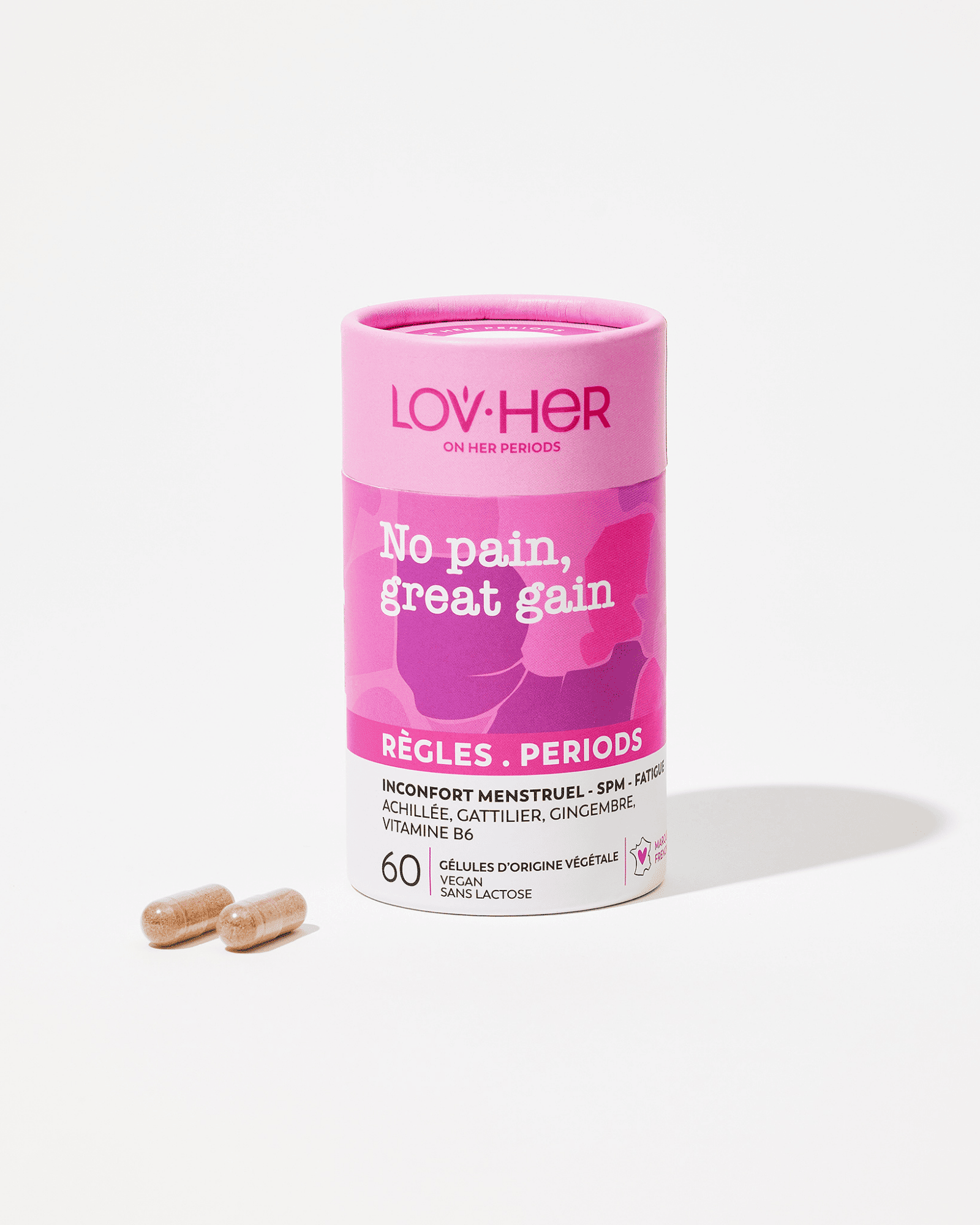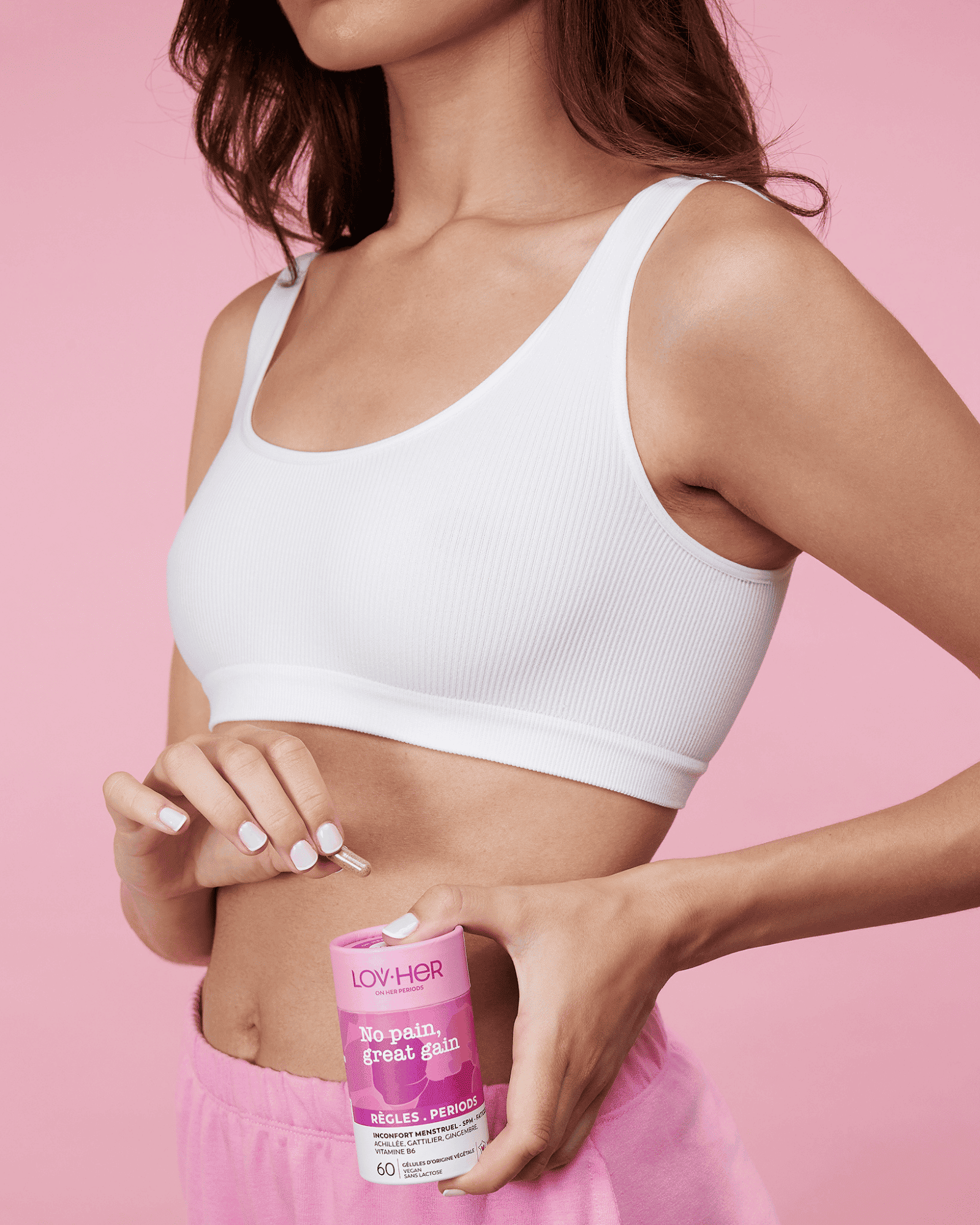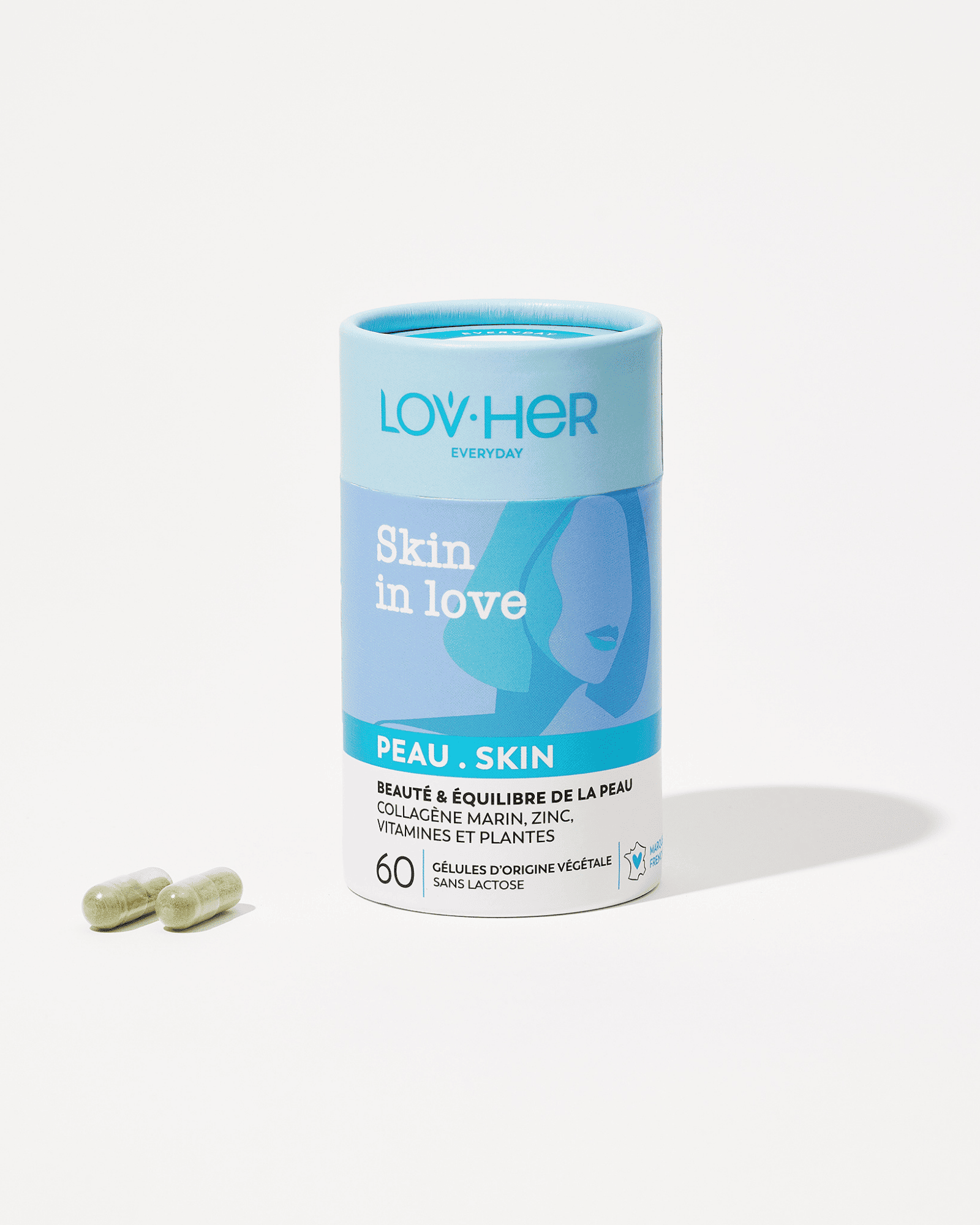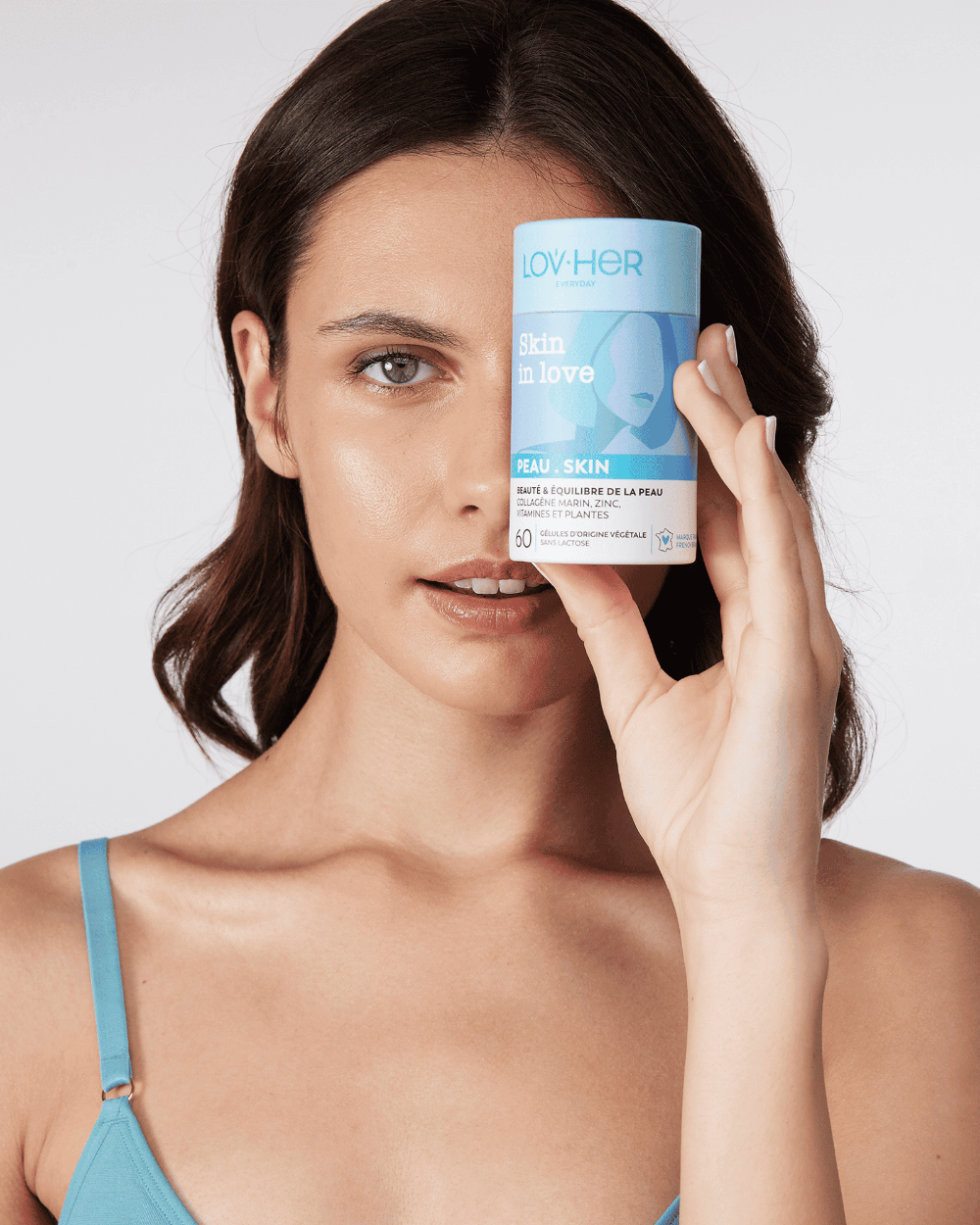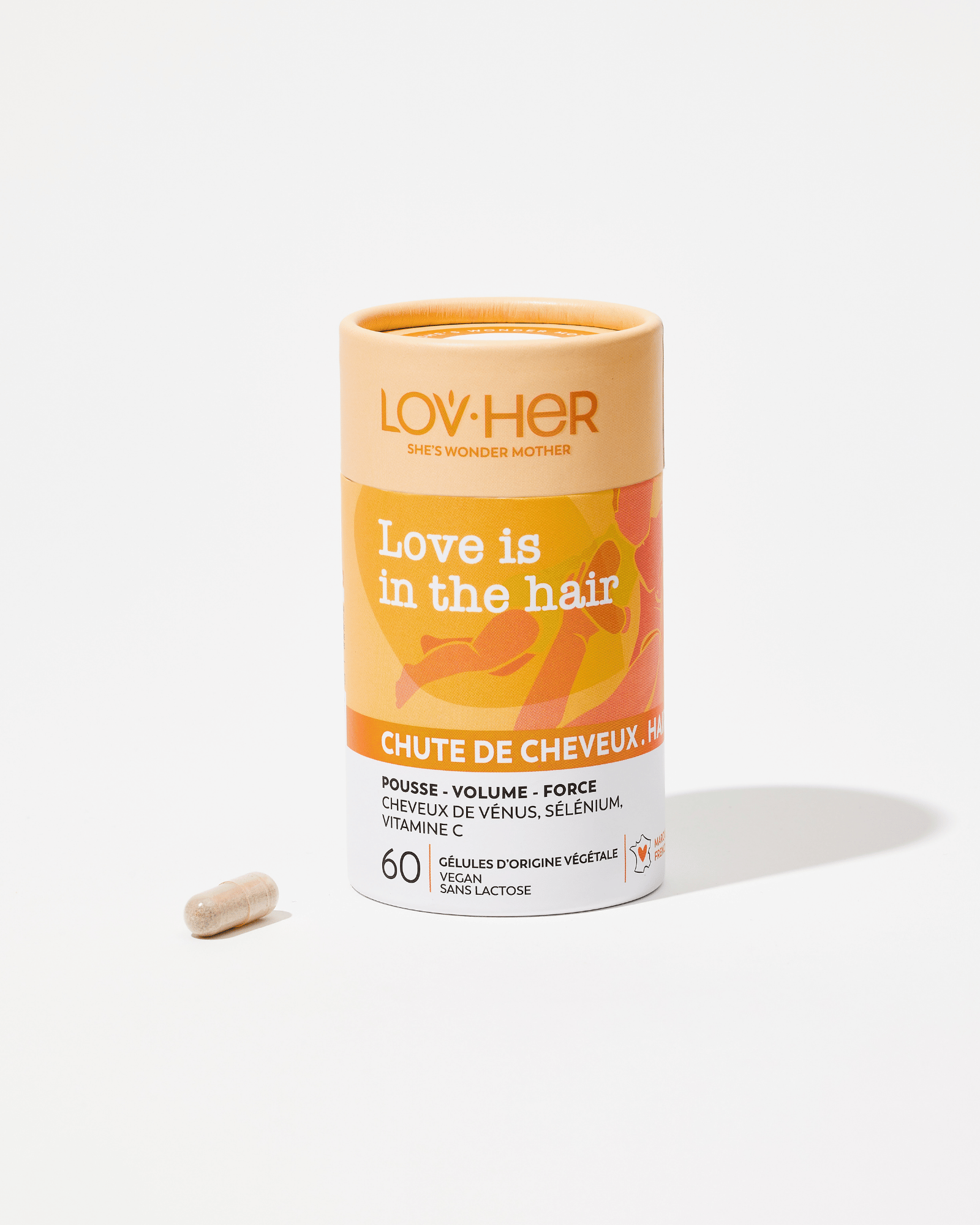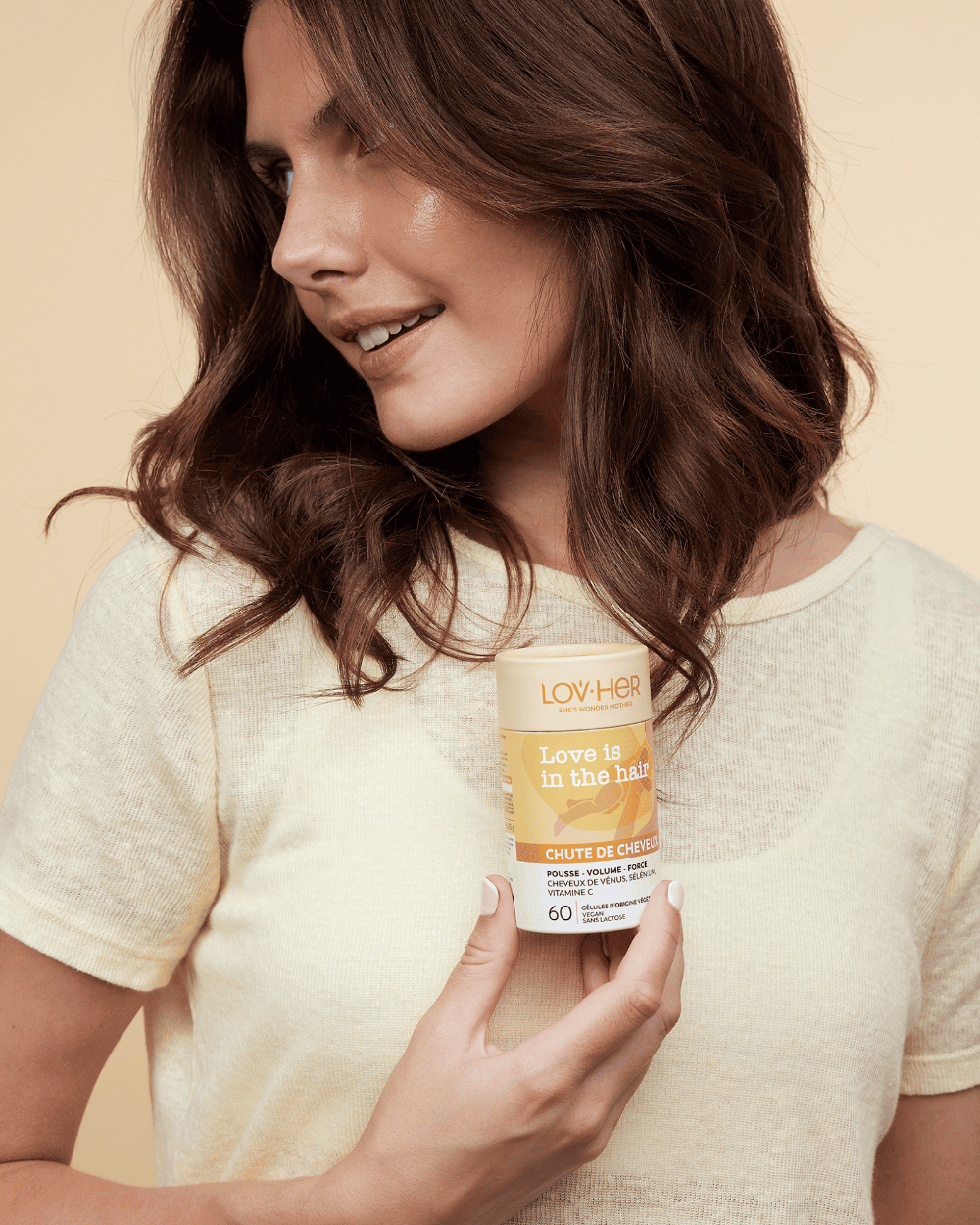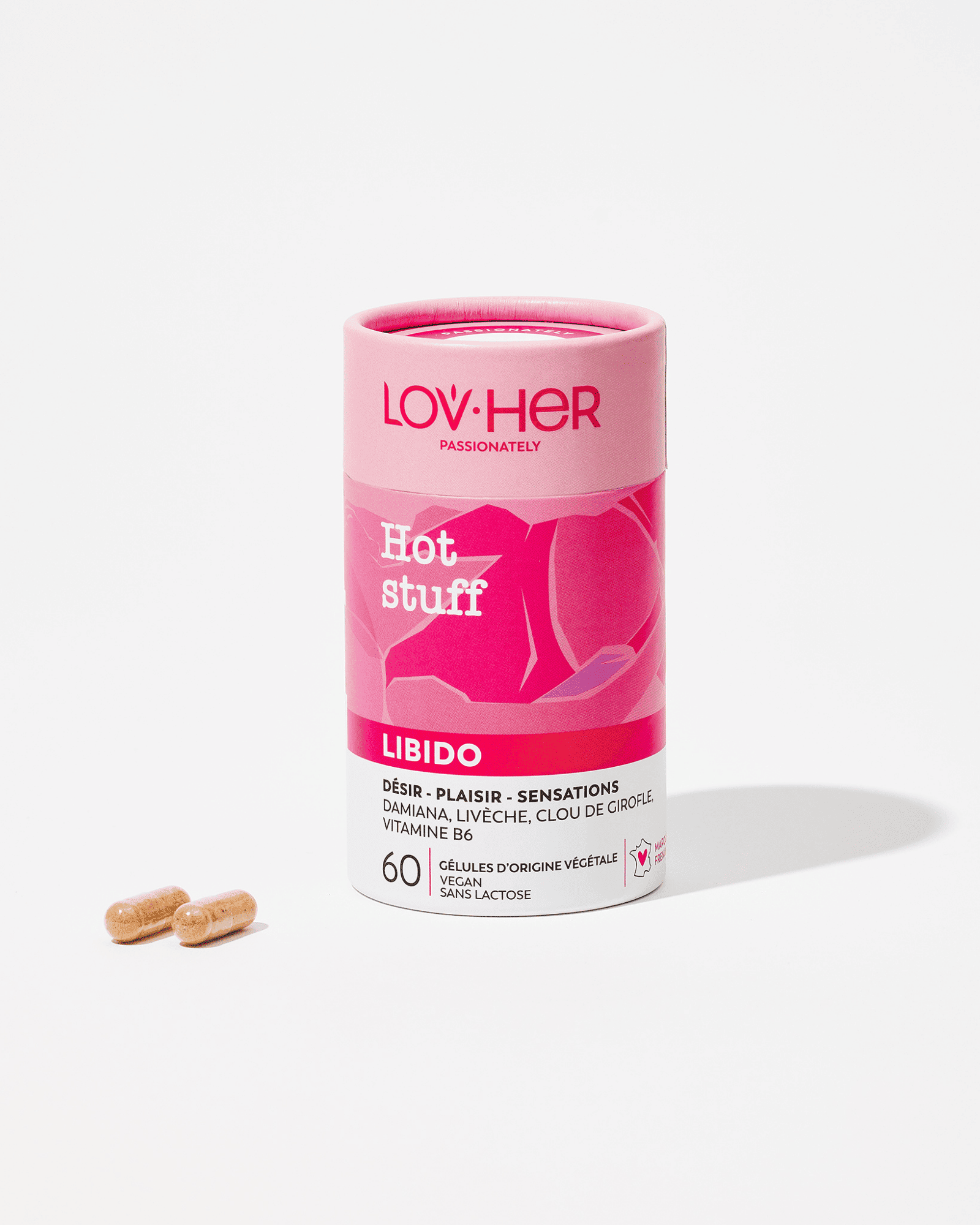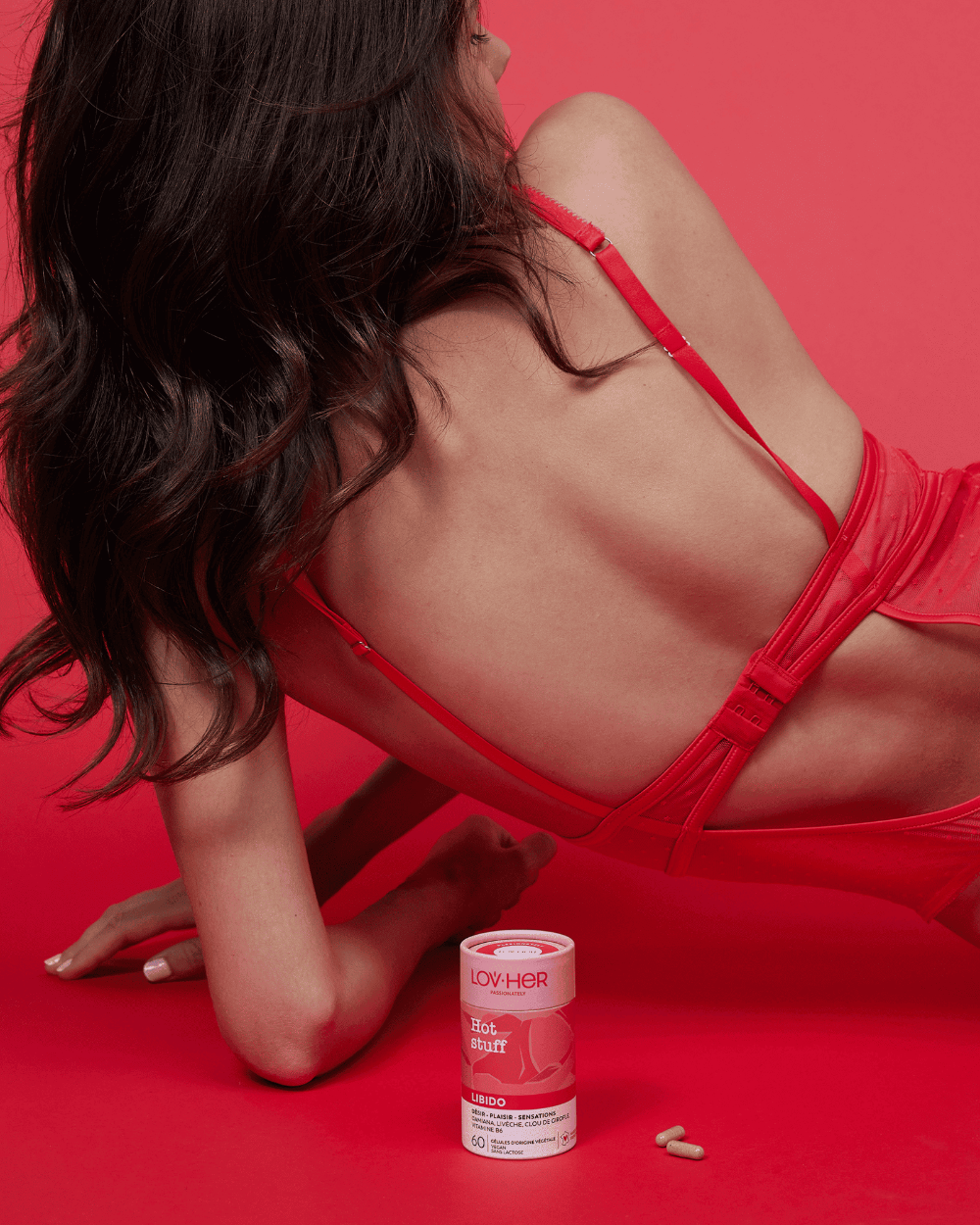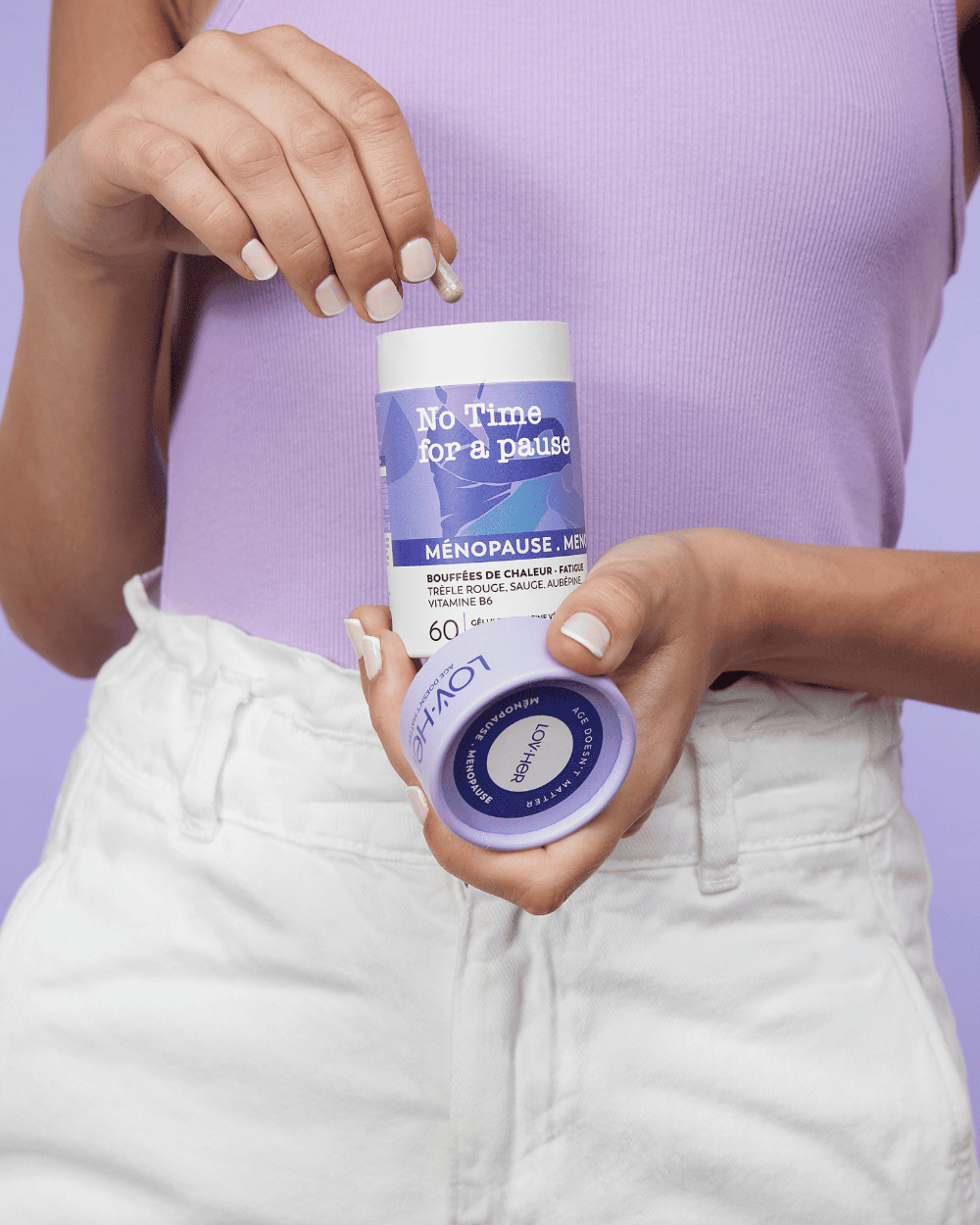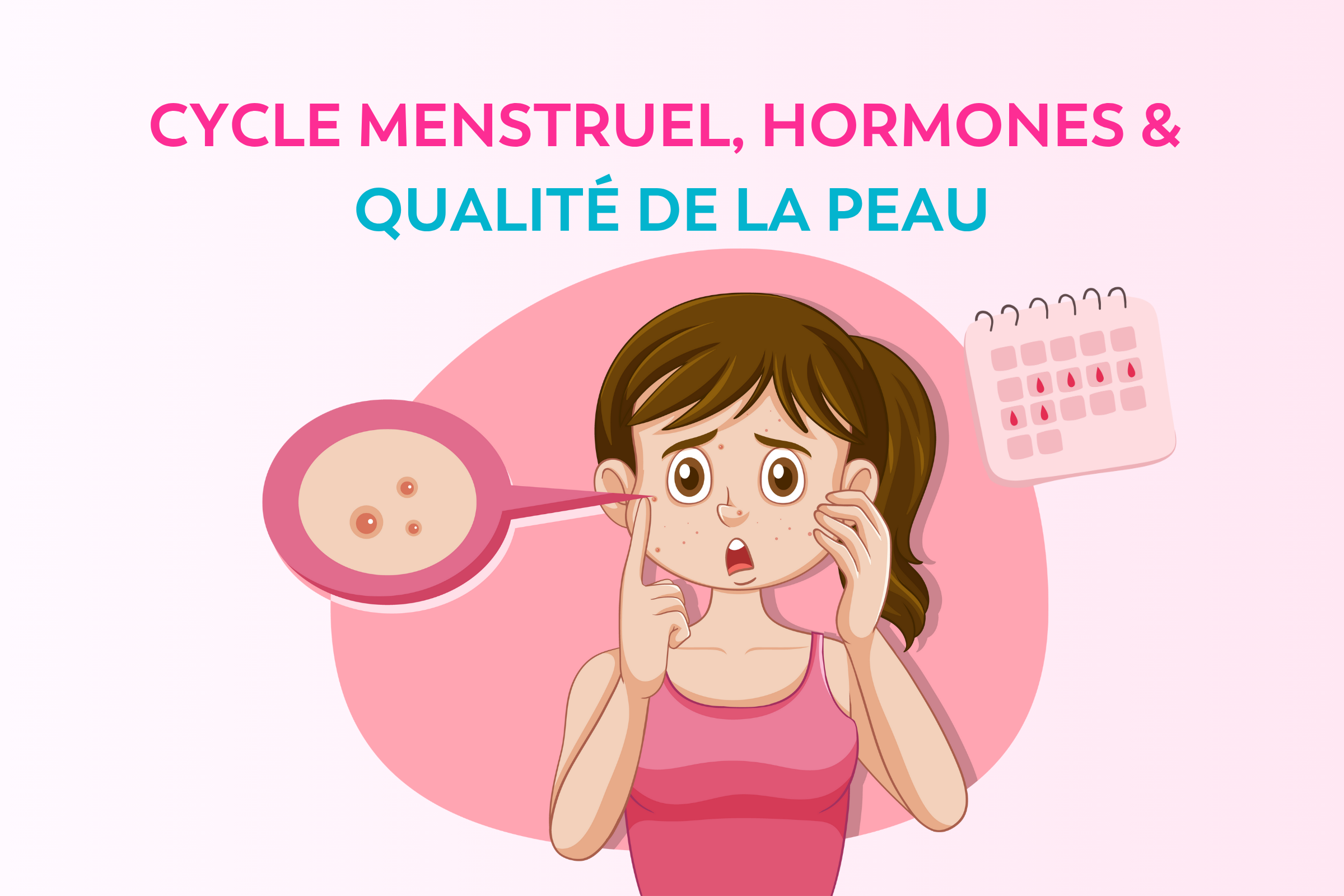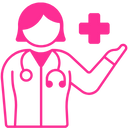The menstrual cycle is much more than just a succession of days. It reflects a complex hormonal ballet, influencing our emotions, energy, and nutritional needs. At Lovher , we believe that a better understanding of this cycle can help every woman optimize her physical and mental well-being.
Phase 1 – Menstruation (Days 1 to 5): support elimination and replenish reserves
When menstruation begins, the drop in estrogen and progesterone is accompanied by fatigue and more or less painful uterine contractions.
Why these foods?
- Iron: To compensate for blood loss and prevent anemia. Sources: lentils, chickpeas, tofu, spinach.
- Omega-3: To reduce inflammation and soothe cramps. Sources: salmon, mackerel, chia seeds.
- Ginger and chamomile: to naturally limit uterine contractions.
💡 Lovher recommends, in addition to a balanced diet: No Pain Great Gain to reduce abdominal tension and soothe this phase.
Phase 2 – Follicular (Days 6 to 14): regenerate and boost vitality
With the increase in estrogen, your energy levels increase and your metabolism is more responsive.
Why these foods?
- Lean, plant-based proteins: to rebuild tissues and synthesize hormones. Examples: eggs, tofu, quinoa.
- B vitamins and folates: to facilitate hormonal detox via the liver. Sources: broccoli, kale, spinach.
- Antioxidants: to protect cells from oxidative stress. Sources: blueberries, raspberries, citrus fruits.
💡 Lovher recommends in addition to a balanced diet: Skin In Love to regulate the skin, limit the appearance of imperfections and strengthen its firmness during this phase.
Phase 3 – Ovulation (Day 14): Support hormonal balance and fertility
During ovulation, your energy is at its peak and your body needs specific hormonal support.
Why these foods?
- Zinc: For fertility and progesterone synthesis. Sources: pumpkin seeds, cashew nuts.
- Monounsaturated fats: To nourish cell membranes and balance hormones. Sources: avocado, olive oil.
- Hydration: To compensate for the slight increase in body temperature. Coconut water, watermelon.
Phase 4 – Luteal (Days 15 to 28): anticipate and limit PMS
Progesterone dominates and premenstrual symptoms may intensify (fatigue, food cravings, irritability).
Why these foods?
- Complex carbohydrates: to stabilize blood sugar and limit sugar cravings. Sources: quinoa, brown rice, sweet potato.
- Magnesium: To calm the nervous system and release muscle tension. Dark chocolate, almonds, sesame seeds.
- Tryptophan: to boost the production of serotonin (the feel-good hormone). Bananas, sunflower seeds.
💡 Lovher recommends: No Pain Great Gain to limit physical and emotional discomfort during this phase.
🔬 Zoom: Micronutrition and hormonal balance
Omega-3 and hormonal inflammation
Omega-3s decrease the production of pro-inflammatory prostaglandins and reduce menstrual cramps.
- Sources: oily fish, flax seeds, rapeseed oil, chia seeds.
Essential micronutrients
- Magnesium: natural anti-stress, supports nervous balance.
- Zinc: for hormonal and reproductive health.
- Vitamin B6: Reduces PMS symptoms.
- Vitamin E: major antioxidant for skin and hormones.
💡 Lovher and micronutrition: Our Skin In Love supplements and No Pain Great Gain help you naturally regulate your cycle, improve your physical and mental well-being.
Conclusion: The Lovher Approach
A diet aligned with your cycle optimizes your energy, skin, and hormonal balance. Lovher guides you with natural solutions designed for your well-being at every stage of the month.
👉 Discover all our advice and products on lovher.com


